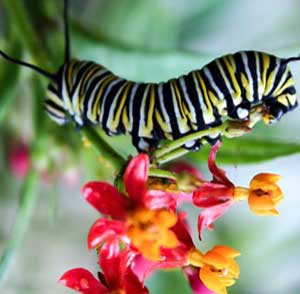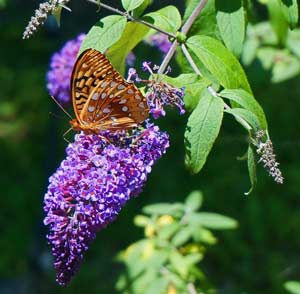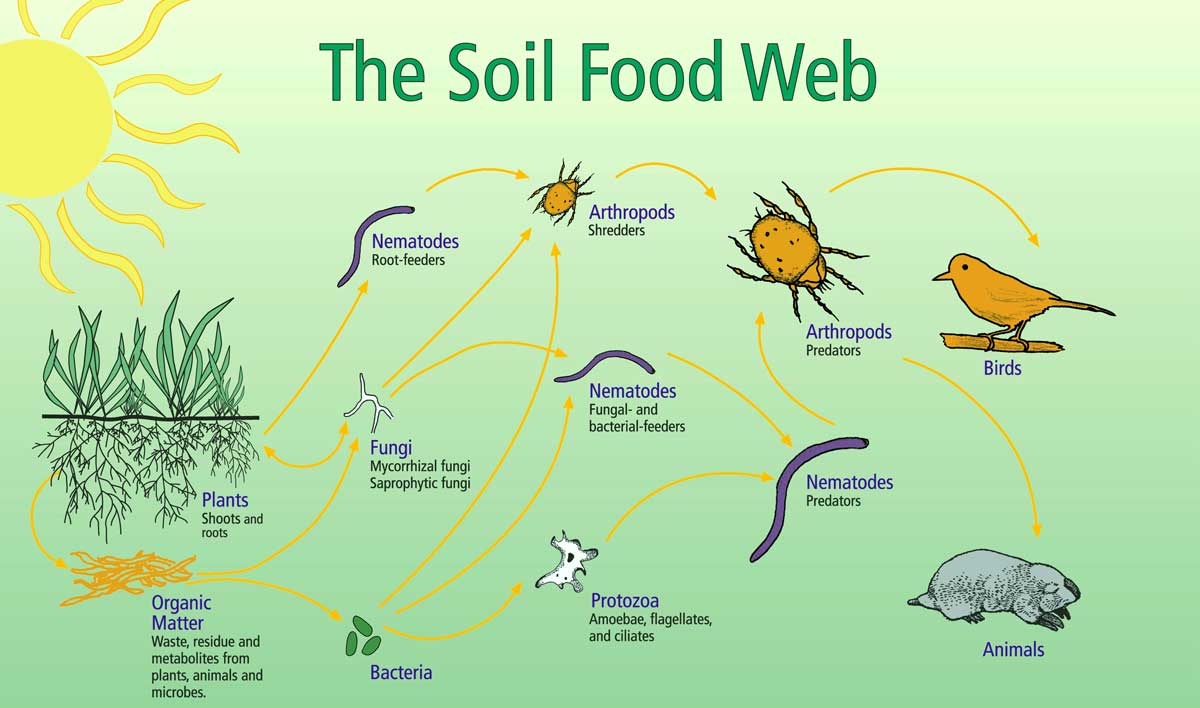[vc_row full_width=”stretch_row_content_no_spaces” bg_type=”image” bg_override=”full”][vc_column css=”.vc_custom_1472607192149{background-position: center !important;background-repeat: no-repeat !important;background-size: contain !important;}”][vcex_spacing size=”20px”][vc_row_inner][vc_column_inner width=”2/6″][vc_single_image image=”7475″][/vc_column_inner][vc_column_inner width=”3/6″][vcex_spacing size=”90px”][vc_column_text]
Butterfly Gardens
[/vc_column_text][vcex_spacing size=”20px”][vc_column_text] Butterflies are very important little creatures. They carry pollen from plant to plant which plants need to make their seeds. Without seeds, plants could not reproduce and many would become extinct. But butterflies are in danger, too. They need places to live. You can help butterflies by making a home for them in your yard. [/vc_column_text][vcex_spacing size=”20px”][vc_column_text css=”.vc_custom_1472697538092{margin-right: 10px !important;margin-left: 10px !important;border-right-width: 10px !important;border-left-width: 10px !important;}”] Pick a good spot. Choose a spot where you can view the garden from a window or sitting area. You’ll need full sun, 6 or more hours a day. For limited space, consider container gardening. A site sheltered from heavy winds, protected by trees, shrubs or walls works best. Stones set in sunny locations give butterflies spots to warm their bodies for flying. [/vc_column_text][/vc_column_inner][vc_column_inner width=”1/6″][/vc_column_inner][/vc_row_inner][vc_single_image image=”7471″][vcex_spacing size=”20px”][/vc_column][/vc_row][vc_row full_width=”stretch_row_content_no_spaces” css=”.vc_custom_1472617351693{background-color: #f5b62b !important;}”][vc_column width=”1/3″][vcex_spacing size=”20px”][vcex_spacing size=”20px”][vc_single_image image=”7654″ alignment=”center” css=”.vc_custom_1473141781919{border-right-width: 20px !important;border-left-width: 20px !important;border-left-color: #ffc20e !important;border-right-color: #ffc20e !important;}”][vcex_spacing size=”20px”][vc_column_text css=”.vc_custom_1472697833048{margin-right: 20px !important;margin-left: 20px !important;border-right-width: 10px !important;border-left-width: 10px !important;}”]
MILKWEED or BUTTERFLY WEED

BOTANICAL NAME: Asclepias spp. [/vc_column_text][vcex_spacing size=”10px”][vc_column_text css=”.vc_custom_1472697966378{margin-right: 20px !important;margin-left: 20px !important;border-right-width: 10px !important;border-left-width: 10px !important;}”] BLOOM TIME: Early to Mid-Summer [/vc_column_text][vcex_spacing size=”10px”][vc_column_text css=”.vc_custom_1472697983777{margin-right: 20px !important;margin-left: 20px !important;border-right-width: 10px !important;border-left-width: 10px !important;}”] COLORS: Depends upon species – orange, reds, yellows, pinks [/vc_column_text][vcex_spacing size=”10px”][vc_column_text css=”.vc_custom_1472698021770{margin-right: 20px !important;margin-left: 20px !important;border-right-width: 10px !important;border-left-width: 10px !important;}”] SPECIAL FEATURES: Milkweeds are the required host plants for caterpillars of the monarch butterfly. Milkweed plants are the host plants for monarch butterflies, but milkweed is also a highly sought nectar source for many other butterfly species as well as hummingbirds and many beneficial insects. The showy flowers of milkweeds offer abundant, high quality nectar to pollinators, making them notable honey bee plants. [/vc_column_text][vcex_spacing size=”20px”][vc_separator border_width=”2″][vcex_spacing size=”20px”][vc_column_text css=”.vc_custom_1472698111090{margin-right: 20px !important;margin-left: 20px !important;border-right-width: 10px !important;border-left-width: 10px !important;}”]
NARROW-LEAFED MILKWEED

BOTANICAL NAME: Asclepius fascicularis [/vc_column_text][vcex_spacing size=”10px”][vc_column_text css=”.vc_custom_1472698165312{margin-right: 20px !important;margin-left: 20px !important;border-right-width: 10px !important;border-left-width: 10px !important;}”] BLOOM TIME: May – October [/vc_column_text][vcex_spacing size=”10px”][vc_column_text css=”.vc_custom_1472698185561{margin-right: 20px !important;margin-left: 20px !important;border-right-width: 10px !important;border-left-width: 10px !important;}”] COLORS: Corolla pink, corona white [/vc_column_text][vcex_spacing size=”10px”][vc_column_text css=”.vc_custom_1472698206968{margin-right: 20px !important;margin-left: 20px !important;border-right-width: 10px !important;border-left-width: 10px !important;}”] Narrow-leaved milkweed is the most widespread species in California, growing in every region of the state except the Sonoran Desert and the mountainous regions of the Sierra Nevada. Milkweed is easiest to sow seeds outside directly in fall rather than summer. [/vc_column_text][vcex_spacing size=”20px”][vc_separator border_width=”2″][vcex_spacing size=”20px”][vc_column_text css=”.vc_custom_1472696624281{margin-right: 20px !important;margin-left: 20px !important;border-right-width: 10px !important;border-left-width: 10px !important;}”]
BUTTERFLY BUSH
 BOTANICAL NAME: Buddleia davidii [/vc_column_text][vcex_spacing size=”10px”][vc_column_text css=”.vc_custom_1472696729524{margin-right: 20px !important;margin-left: 20px !important;border-right-width: 10px !important;border-left-width: 10px !important;}”]
BOTANICAL NAME: Buddleia davidii [/vc_column_text][vcex_spacing size=”10px”][vc_column_text css=”.vc_custom_1472696729524{margin-right: 20px !important;margin-left: 20px !important;border-right-width: 10px !important;border-left-width: 10px !important;}”]
PLANT TYPE: Shrub
[/vc_column_text][vcex_spacing size=”10px”][vc_column_text css=”.vc_custom_1472696709809{margin-right: 20px !important;margin-left: 20px !important;border-right-width: 10px !important;border-left-width: 10px !important;}”] SUN EXPOSURE: Full Sun [/vc_column_text][vcex_spacing size=”10px”][vc_column_text css=”.vc_custom_1472696665580{margin-right: 20px !important;margin-left: 20px !important;border-right-width: 10px !important;border-left-width: 10px !important;}”]
BLOOM TIME: Summer and Fall
[/vc_column_text][vcex_spacing size=”10px”][vc_column_text css=”.vc_custom_1472696778542{margin-right: 20px !important;margin-left: 20px !important;border-right-width: 10px !important;border-left-width: 10px !important;}”] COLORS: Pink, Purple, White and Magenta [/vc_column_text][vcex_spacing size=”10px”][vc_column_text css=”.vc_custom_1472696840215{margin-right: 20px !important;margin-left: 20px !important;border-right-width: 10px !important;border-left-width: 10px !important;}”] SPECIAL FEATURES: Attracts Birds and Butterflies Buddleias need full sun and fertile, well-drained soil. [/vc_column_text][vcex_spacing size=”10px”][vc_column_text css=”.vc_custom_1472696884991{margin-right: 20px !important;margin-left: 20px !important;border-right-width: 10px !important;border-left-width: 10px !important;}”] Milkweeds are very DROUGHT TOLERANT. Water them freely when first planted and when growing vigorously. Then, sparingly the rest of the time. In the summer, if rainfall is less than 1 inch per week, water deeply when needed. [/vc_column_text][vcex_spacing size=”20px”][vc_separator border_width=”2″][vcex_spacing size=”20px”][vc_single_image image=”6639″ add_caption=”yes” css=”.vc_custom_1472698367281{margin-right: 20px !important;margin-left: 20px !important;padding-right: 10px !important;padding-left: 10px !important;}”][/vc_column][vc_column width=”2/3″ css=”.vc_custom_1472617523182{margin-right: 10px !important;margin-left: 10px !important;border-right-width: 10px !important;border-left-width: 10px !important;padding-right: 10px !important;padding-left: 10px !important;}”][vcex_spacing][vc_column_text]
Tips to Help Attract Butterflies to Your Garden
PLANT NECTAR PLANTS
At different stages of their lives, butterflies eat different things. The caterpillar of almost all butterflies eat various parts of plants, especially the leaves. Each kind of butterfly (species) may prefer only a few kinds of plants or plant parts. Most butterfly adults sip flower nectar (but some eat fluids from sap flowers on trees, rotting fruits, bird or animal droppings.) Pay attention to the plants that butterflies land on in nurseries and public gardens and plant the same ones in your garden.

PROVIDE WATER
Most adult eat only liquids of different kinds to maintain their water balance and to give them energy. Butterflies sometimes have to drink fluids from wet sand or mud along streams and at the edges of dirt roads or trails. A big rock with a natural indentation makes a good drinking fountain for butterflies. Shallow puddles are good also.

OFFER SHELTER
Butterflies do not fl y at night. When it rains, they usually seek shelter in the same places they go for the night. Some butterflies hide under leaves, some crawl down under rocks, and some just sit, with their head down, on grass or branches with their wings held tightly. If it rains very hard, or if it is very windy, butterflies can become tattered or die. They prefer sunny areas because they are “coldblooded,” and need the sun’s heat to warm their bodies before they can fl y around.
PLANT FLOWERS THAT ATTRACT BUTTERFLIES
Butterfly food. Butterflies can eat anything that can dissolve in water. They mostly feed on nectar from flowers but also eat tree sap, dung, pollen, or rotting fruit.  [/vc_column_text][vcex_spacing size=”20px”][vc_column_text]
[/vc_column_text][vcex_spacing size=”20px”][vc_column_text]
BUILD A SOIL FOOD WEB
A healthy soil food web will benefit all plants and creatures. Soil organisms feed on organic compounds in the soil, breaking down and releasing nutrients the plants need but cannot extract from the soil themselves. A healthy soil food web of organisms breaking down organic matter into a form available for nutrient uptake by plants’ roots improves the fertility of the soil and the vigor of the plants. Compost worked into the soil is an excellent natural amendment that improves soil conditions by feeding and increasing soil organisms and increasing soil moisture retention. Organic mulches applied as a top dressing suppress weeds, prolong soil moisture, help control erosion and improve soil conditions and the soil food web as they break down over time.

AVOID USING PESTICIDES
 Butterflies are insects. Any insecticide that can kill your gardens “pests,” will kill butterflies and other friends, too. Any insecticide may affect butterfly caterpillars, other beneficials, and soil microbes. Even a small dose of pesticides will ruin a sustainable garden’s biological balance and biodiversity advantage. One of the most important conservation decisions you can make is to avoid the use of chemicals in the garden. It is healthier for you, the beneficial insects, and the environment. Go Organic and Don’t Use Chemicals!
Butterflies are insects. Any insecticide that can kill your gardens “pests,” will kill butterflies and other friends, too. Any insecticide may affect butterfly caterpillars, other beneficials, and soil microbes. Even a small dose of pesticides will ruin a sustainable garden’s biological balance and biodiversity advantage. One of the most important conservation decisions you can make is to avoid the use of chemicals in the garden. It is healthier for you, the beneficial insects, and the environment. Go Organic and Don’t Use Chemicals!
[/vc_column_text][vc_separator border_width=”2″][vcex_spacing size=”20px”][vc_single_image image=”7494″ add_caption=”yes” alignment=”center”][/vc_column][/vc_row][vc_row full_width=”stretch_row_content_no_spaces” css=”.vc_custom_1473125833360{margin-right: 40px !important;padding-right: 20px !important;}”][vc_column css=”.vc_custom_1473126047672{margin-right: 60px !important;margin-left: 40px !important;padding-right: 20px !important;padding-left: 20px !important;}”][vcex_spacing size=”50px”][vcex_spacing size=”50px”][vc_column_text]
HOST & NECTAR PLANTS
The main purpose of “host“ plants is to provide shelter for butterflies to lay their eggs, and provide food for developing caterpillars. Host plants encourage the butterflies to breed and lay eggs.
The main purpose of “nectar“ plants is to provide food for adult butterflies.
[/vc_column_text][vcex_spacing][vc_column_text css=”.vc_custom_1473130327204{margin-right: 40px !important;margin-left: 40px !important;background-color: #ffffff !important;}”]
type of Butterfly |
Caterpillar Host Plant |
Butterfly Nectar Source |
| American Painted Lady | Everlasting, Daisy, Burdock | Aster, Dogbane, Goldenrod, Mallow, Privet, Vetch |
| American Snout | Hackberry | Aster, Dogbane, Dogwood, Goldenrod, Pepperbush |
| Anise Swallowtail | Queen Anne’s Lace | Buddleia, Joe Pye Weed |
| Baltimore Checkerspot | Turtlehead, False Foxglove, Plantain | Milkweed, Viburnum, Wild Rose |
| Black Swallowtail | Parsley, Dill, Fennel | Aster, Buddleia, Joe Pye Weed, Alfalfa |
| Clouded Sulphur | Clover | Goldenrod, Grape Hyacinth, Marigold |
| Cloudless Sulphur | Cassia, Apple, Clover | Zinnia, Butterfly Bush, Cosmos, Cushion Mum |
| Comma | Elm, Hops, Nettle | Butterfly Bush, Dandelion |
| Common Buckeye | Snapdragon, Loosestrife | Carpetweed |
| Common Checkered Skipper | Mallow/Hollyhock | Shepherd’s needles, Fleabane, Aster, Red Clover |
| Common Sulphur | Vetch | Aster, Dogbane, Goldenrod |
| Common Wood-nymph | Purpletop Grass | Purple Coneflower |
| Eastern Pygmy Blue | Glasswort | Salt Bush |
| Eastern Tailed Blue | Clover, Peas | Dogbane |
| Falcate Orangetip | Rock Cress, Mustard | Mustard, Strawberry, Chickweed, Violet |
| Giant Swallowtail | Citrus | Joe Pye Weed, Buddleia |
| Gorgone Checkerspot | Sunflower | Sunflower, Goldenrod |
| Gray Hairstreak | Mallow/Hollyhock, Clover, Alfalfa | Thistle, Ice Plant |
| Great Spangled Fritillary | Violet | Thiste, Black-eyed Susan, Milkweed, Ironweed |
| Greater Fritillary | Violet | Joe Pye Weed |
| Gulf Fritillary | Pentas, Passion-vine | Joe Pye Weed |
| Hackberry Emperor | Hackberry | Sap, Rotting fruit, Dung, Carrion |
| Little Glassywing | Purpletop Grass | Dogbane, Zinnia |
| Little Yellow | Cassia, Clover | Clover |
| Monarch | Milkweed | Dogbane, Buddleia |
| Mourning Cloak | Willow, Elm, Poplar, Birch, Nettle, Wild Rose | Butterfly Bush, Milkweed, Shasta Daisy, Dogbane |
| Orange Sulphur | Vetch. Alfalfa, Clover | Alfalfa, Aster, Clover, Verbena |
| Orange-barred Sulphur | Cassia | Many plants |
| Painted Lady | Thistle, Daisy, Mallow/Hollyhock, Burdock | Aster, Zinnia |
| Pearl Crescent | Aster | Dogbane |
| Pipevine Swallowtail | Dutchman’s Pipe, Pipevine | Buddleia |
| Polydamus Swallowtail | Pipevine | Buddleia |
| Queen | Milkweed | Milkweed, Beggar-tick, Daisy |
| Question Mark | Hackberry, Elm, Nettle, Basswood | Aster, Milkweed, Sweet Pepperbush |
| Red Admiral | Nettle | Stonecrop, Clover, Aster, Dandelion, Goldenrod, Mallow |
| Red-spotted Purple | Black Cherry, Willow, Poplar | Privet, Poplar |
| Silver-spotted Skipper | Black Locust, Wisteria | Dogbane, Privet, Clover, Thistle, Winter Cress |
| Silvery Checkerspot | Sunflower | Cosmos, Blanket Flower, Marigold, Phlox, Zinnia |
| Sleepy Orange | Cassia, Clover | Blue Porter, Beggar Tick, Aster |
| Spicebush Swallowtail | Spicebush, Sassafras | Dogbane, Joe Pye Weed, Buddleia |
| Spring Azure | Dogwood, Viburnum, Blueberry, Spirea, Apple | Blackberry, Cherry, Dogwood, Forget-me-not, Holly |
| Tawny Emperor | Hackberry | Tree sap, Rotting fruit, Dung, Carrion |
| Tiger Swallowtail | Black Cherry, Birch, Poplar, Willow | Joe Pye Weed, Buddleia |
| Variegated Fritillary | Violet, Passion Vine | Joe Pye Weed |
| Viceroy | Willow, Poplar, Fruit Trees | Thistle, Beggar-tick, Goldenrod, Milkweed |
| Western Tailed Blue | Clover, Peas | Legumes |
| White Admiral | Birch, Willow, Poplar, Honeysuckle | Aphid Honeydew, Bramble Blossom |
| Zabulon Skipper | Purpletop Grass | Blackberry, Vetch, Milkweed, Buttonbush,Thistle |
| Zebra Longwing | Passion-vine | Verbena, Lantana, Shepard’s Needle |
| Zebra Swallowtail | Pawpaw | Dogbane, Joe Pye Weed, Buddleia, Privet, Blueberry |
[/vc_column_text][/vc_column][/vc_row][vc_row][vc_column][vc_column_text]
[/vc_column_text][/vc_column][/vc_row]
